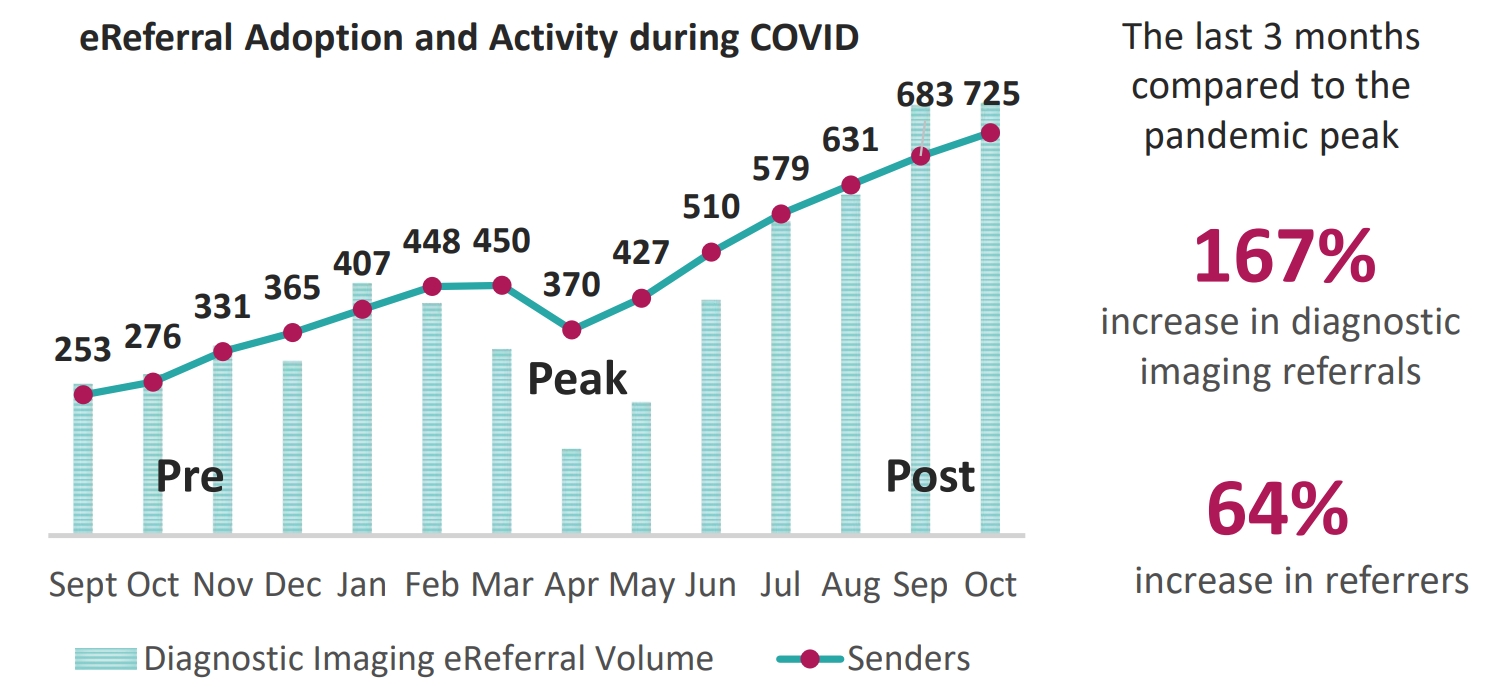eReferral Adoption Strategies throughout the COVID-19 Pandemic
Change Management Strategies during the Pandemic:
- Remote training, targeted live webinars and myth-busting engagement sessions
- Maintaining open lines of remote communication and regular check-ins
- Newsletters to keep users informed, highlighting tips and tricks
- Promoting and leveraging eReferral technology and enhancements
Key takeaways
Adapting change management tactics and clinical engagement strategies has resulted in increased adoption of electronic referral, supporting a quick rebound post first wave of the COVID-19 pandemic.

Having a one-on-one demo and sending links to instructions with attachments so that I can practice on my own; extending an ongoing offer to support as needed down the road, providing direct contact information, and welcoming callbacks numerous times if there were questions, was helpful!
Nurse Practitioner
Post-Training Survey OH-West
Interested in learning more?
Interested in partnering with us or learning more about
what we can offer you? Please reach out here.
Get the latest resources and insights
-

Enhancements made to patient email notifications
Quick Facts Key takeaways Feedback received from the Patient Experience Survey, clinical champions and eReferral…
-

Webinar on leveraging AI scribes for your ideal practice (part 1)
Sharing some tips, tricks, and key takeaways from our Ideal Primary Care Practice Model webinar,…
-

Fiscal year 22/23 eReferral highlights
eReferral deployment across Ontario, led by the Ontario eServices Program, contributed to a large degree…
-

eReferral CoP Session #2
On September 19, 2024, the eReferral Community of Practice CoP came together to collaboratively discuss…